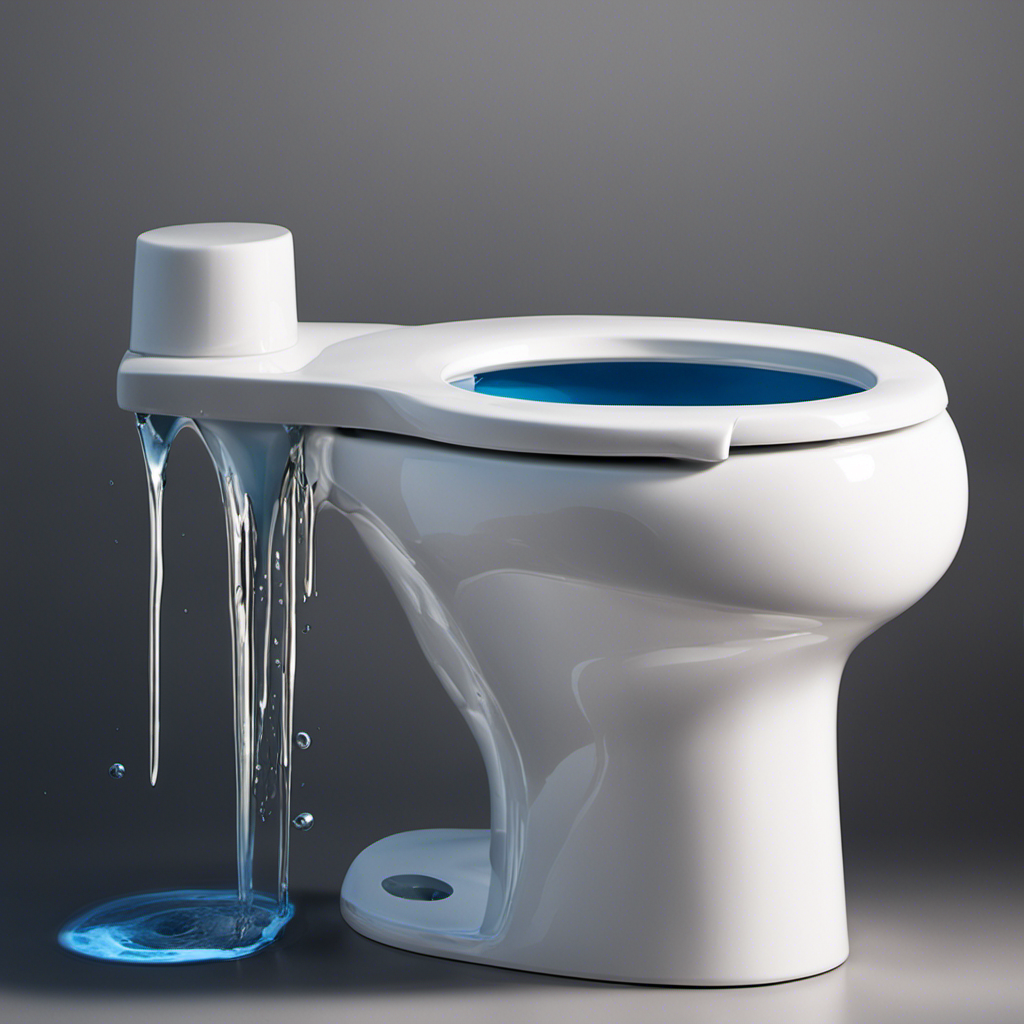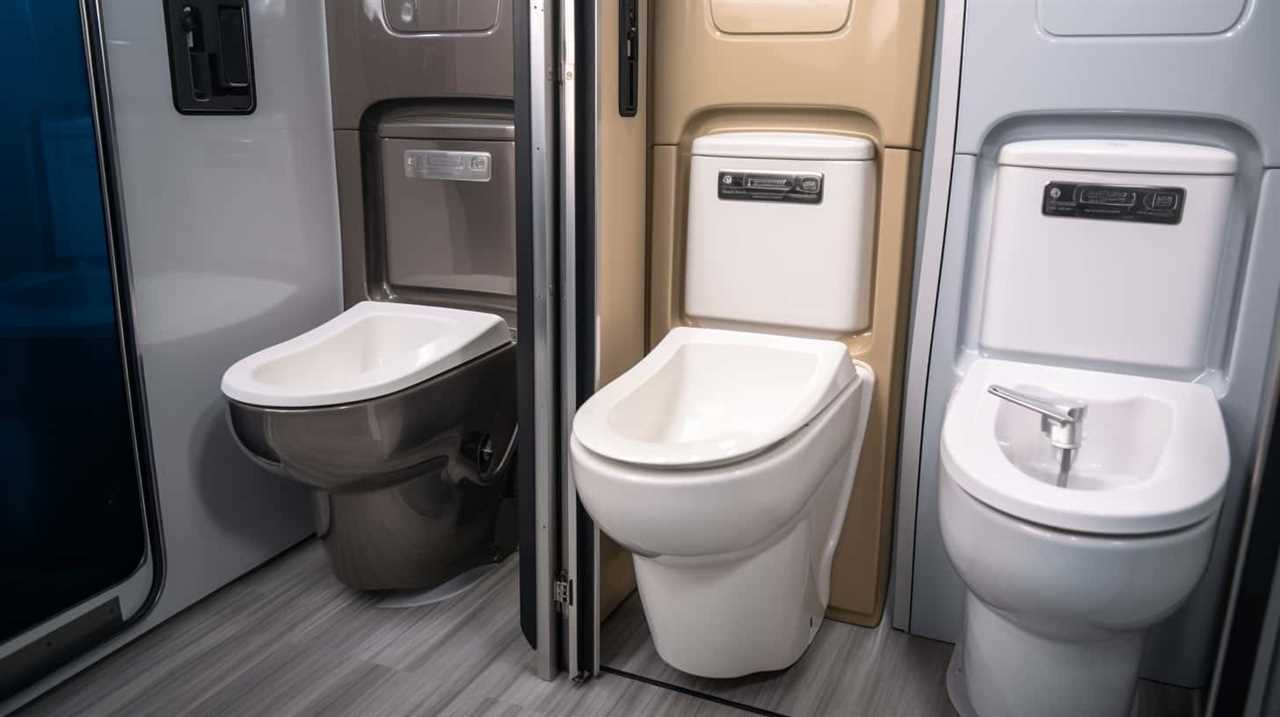Did you know that over 30% of households experience toilet leaks? A leaking toilet can be a frustrating and costly problem to deal with.
In this article, I will explore the common causes of toilet leaks and provide you with detailed information on how to identify and fix them. From faulty flappers and flush valves to damaged fill valves and float assemblies, understanding the root cause of the leak can help you prevent further damage and save money on your water bill.
Key Takeaways
- Over 30% of households experience toilet leaks.
- Faulty flappers and flush valves can cause continuous water flow and leaks.
- Damaged fill valves and float assemblies can result in water wastage and prevent the fill valve from shutting off properly.
- Cracked or loose toilet tanks and leaking toilet seals and wax rings can lead to water leaks and potential damage.
Common Causes of Toilet Leaks
One common cause of toilet leaks is when you don’t tighten the water supply line enough. It’s important to ensure that the water supply line connecting the toilet tank to the wall is securely tightened to prevent any potential leaks.
Signs of a toilet leak include water pooling around the base of the toilet, a constantly running toilet, or a noticeable increase in your water bill.
To prevent toilet leaks, regularly inspect the water supply line and ensure it is properly tightened. Additionally, check the condition of the toilet flapper and replace it if it appears worn or damaged.
Regular maintenance and inspection can go a long way in preventing costly and inconvenient toilet leaks.
Faulty Flapper and Flush Valve
Check if your flapper or flush valve is faulty to determine the cause of the leak. These two components play a crucial role in regulating water flow in the toilet tank.
A faulty flapper can result in water continuously flowing into the bowl, leading to a leak. To check if it’s the flapper, simply lift the tank lid and observe the flapper as you flush. If it doesn’t close completely or if it’s worn out, it may need to be replaced.
Similarly, a faulty flush valve can also cause leaks. The flush valve controls the release of water into the bowl during flushing. If it’s not sealing properly, water can escape into the bowl and cause a leak.
Inspecting and replacing these components, along with checking the toilet tank bolts and the water supply line, can help resolve a leaky toilet.
Damaged Fill Valve and Float Assembly
To fix the issue, you’ll want to inspect the fill valve and float assembly for any damage or malfunction. These components are critical for regulating the water level in the toilet tank and preventing it from overflowing.
Here are a few things to look out for:
-
Cracks or leaks in the fill valve: This can cause water to continuously flow into the tank, wasting water and potentially causing damage to the surrounding area.
-
Broken or misaligned float assembly: If the float is damaged or not positioned correctly, it can prevent the fill valve from shutting off properly, leading to an overflowing toilet.
-
Faulty water supply connection: Check the connection between the fill valve and the water supply pipe. A damaged or loose connection can cause water to leak from the supply line.
Make sure to address any issues with these components to ensure a properly functioning toilet and prevent water wastage or potential damage.
Cracked or Loose Toilet Tank
Make sure you inspect the toilet tank for any cracks or looseness, as this can lead to water wastage and potential damage.
Toilet tank cracks occur due to various reasons, such as age, excessive pressure, or faulty installation. Cracks can cause water to leak, resulting in higher water bills and potential water damage to your bathroom floor.
To check for cracks, start by examining the tank carefully, looking for any visible signs of damage. Additionally, check the tank’s bolts to ensure they are securely fastened. Loose toilet bolts can cause the tank to shift, leading to leaks.
If you notice any cracks or loose bolts, it is crucial to address the issue promptly to prevent further damage.
Moving on to the next section, let’s discuss the importance of inspecting the toilet seal and wax ring.
Leaking Toilet Seal and Wax Ring
Inspecting the toilet seal and wax ring helps me identify any potential issues that could lead to water damage or wastage. It’s important to regularly check these components to ensure the toilet is functioning properly.
Here are three things to look out for when inspecting the toilet seal and wax ring:
-
Cracks or gaps: A damaged seal or wax ring can cause water to leak from the base of the toilet, resulting in a leaking toilet bowl. Look for any cracks or gaps in the seal or wax ring that may be causing the leak.
-
Water stains: Check the floor around the base of the toilet for any water stains. This could be a sign of a leaking toilet seal or wax ring.
-
Water supply leak: Inspect the water supply line connecting to the toilet. Look for any signs of leakage or dripping water. A water supply leak can also contribute to a leaking toilet bowl.
Frequently Asked Questions
How Do I Know if My Toilet Is Leaking?
To determine if my toilet is leaking, I can check for signs like water on the floor or a constantly running toilet. If I suspect a leak, I should promptly contact a professional for toilet leak detection and repair.
Can a Toilet Leak Cause Damage to My Bathroom Floor?
Yes, a toilet leak can cause significant damage to your bathroom floor. If left unrepaired, the constant flow of water can weaken the flooring, leading to costly repairs and potential safety hazards.
Is It Possible to Fix a Leaking Toilet Myself, or Should I Call a Professional Plumber?
Fixing a leaking toilet can be done DIY, but it’s important to consider the complexity of the issue. Some common causes are worn-out flappers or faulty fill valves. If unsure, calling a professional plumber is recommended.
Are There Any Preventive Measures I Can Take to Avoid Toilet Leaks?
To avoid toilet leaks, I can take preventive measures. Checking the water supply line, tightening connections, and inspecting the tank components regularly can help. Common causes of leaks include faulty flapper valves, loose connections, and cracked tanks.
Are There Any Health Risks Associated With a Leaking Toilet?
There can be health risks associated with a leaking toilet, such as mold growth and water contamination. Additionally, it leads to unnecessary water wastage. It’s important to address any leaks promptly to avoid these issues.
Conclusion
After diving deep into the world of toilet leaks, I have discovered that there are several common culprits behind this annoying issue. From a faulty flapper and flush valve to a damaged fill valve and float assembly, these sneaky little problems can cause a whole lot of trouble.
And let’s not forget about the cracked or loose toilet tank, which can lead to some serious leakage. And don’t even get me started on the leaking toilet seal and wax ring! It’s like a never-ending battle against the forces of water.
But fear not, armed with this knowledge, you can conquer any toilet leak that comes your way! So next time you face this pesky predicament, remember, knowledge is power, and you’ve got the power to fix that leaky toilet for good!









